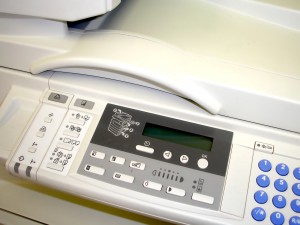This is a sponsored post on behalf of Acer. To find out more about sponsored content on Technology Bloggers, please visit our Privacy Policy.
Before you read any further you should know that as a writer I have been offered a small fee to produce this article, and will receive a (very small) fee for every person in the UK who watches the video – for a limited time. That said, this in no way affects my objectivity or impartiality, and I endeavour to make this article as interesting as any other on the blog. Our policy as a blog is to only accept paid editorials which are of interest to the writer, and which we believe will be of interest to our readers. Funds raised help us to maintain and improve the blog.
The word Ultrabook has become somewhat of a buzzword in the computing industry in recent times, but many people don’t really know what it means or refers to. What is an Ultrabook?
It really is amazing how fast paced the technology industry it. Go back 3 years and tablets didn’t exist and just 6 years ago smartphones didn’t either.
Netbooks
The first variation on a laptop was the Netbook, which went on sale in 2007. A Netbook a term used to describe laptops which are lightweight, portable, lacking in external ports and cheap. Most Netbooks don’t have CD drives and as far as I am aware none have floppy drives as standard.
Netbooks were deigned as a cheaper alternative to a laptop which is ideal for using on the go. The rise of Netbooks was deigned to improve the portability of a laptop, as despite laptops being more portable than desktops, they often weren’t practical for using on the go.
Ultrabooks
Last year laptop makers went a step further in the long-term development of the device and created the Ultrabook. Ultrabooks were designed to be as portable as a Netbook, but the next level up in terms of speed, practicality and storage.
Ultrabooks are very well designed laptops with powerful processors, designed to use less power and therefore have a better battery life. Ultrabooks are like Netbooks in that they are very portable, but they are also powerful.
Most of the big technology firms are now making Ultrabooks. Acer, Dell, HP and Samsung all have their own brands.
The majority of Ultrabooks are powered by Intel’s powerful ‘i‘ processors. Intel Core i3 processors are what you find in most Ultrabooks, these are very powerful and cope well with multiple operations. Some Ultrabooks have Intel Core i5 processors which, are another step up from the i3 – more power leading to better handling and greater possibilities. There are now a few Ultrabooks which run Intel Core i7 processors, which are lightning fast! i7 is rare though, as most people would never need to a processor which that fast.
One recent addition to the Ultrabook market is Acer’s Aspire S5. It is currently the worlds thinnest Ultrabook, measuring a tiny 15mm closed and a staggering 11mm when open – it beets the competition by some considerable margin! Dell XPS 14 for example is nearly 2.1cm when shut (almost an inch) whereas the Aspire S5 is less than 1.5cm.
Acer’s Aspire S5 is not only ultra thin, but also ultra light (starting to see why it’s called an Ultrabook?) weighing in at 1.2kg. The screen is an impressive 13.3 inches making it pretty much the same size as a 13-inch MacBook Pro. That said the equivalent MacBook weighs 2.06kg, 0.86kg heavier than the Aspire S5 – that’s like carrying the best part of an extra bag of sugar around with you!
Ultrabooks really do showcase the amazing technological advancements that have been made in the last few years. Devices are getting smaller, thinner, less power hungry and more powerful, and the Aspire S5 is no exception.
Technology firms seem intent on advertising their new devices in the most innovative way possible at the moment, and Acer have produced an advert in-line with this trend for their new Ultrabook. If you are interested, take a look at the ad below to see the Aspire S5 in action – quite literally in action!
%CODEUMACERC1%
So what are your thoughts on the Ultrabook trend? Do you think that portable is the future, and desktops are destined for the scrapheap, or is there a future where they co-exist?
Which is your preferred option, the usually slightly cheaper, but less capable Netbook, or would you rather spend a little more to have a much more powerful, performance built Ultrabook? Personally I would have an Ultrabook any day of the week!
Thoughts and comments welcome below 🙂


